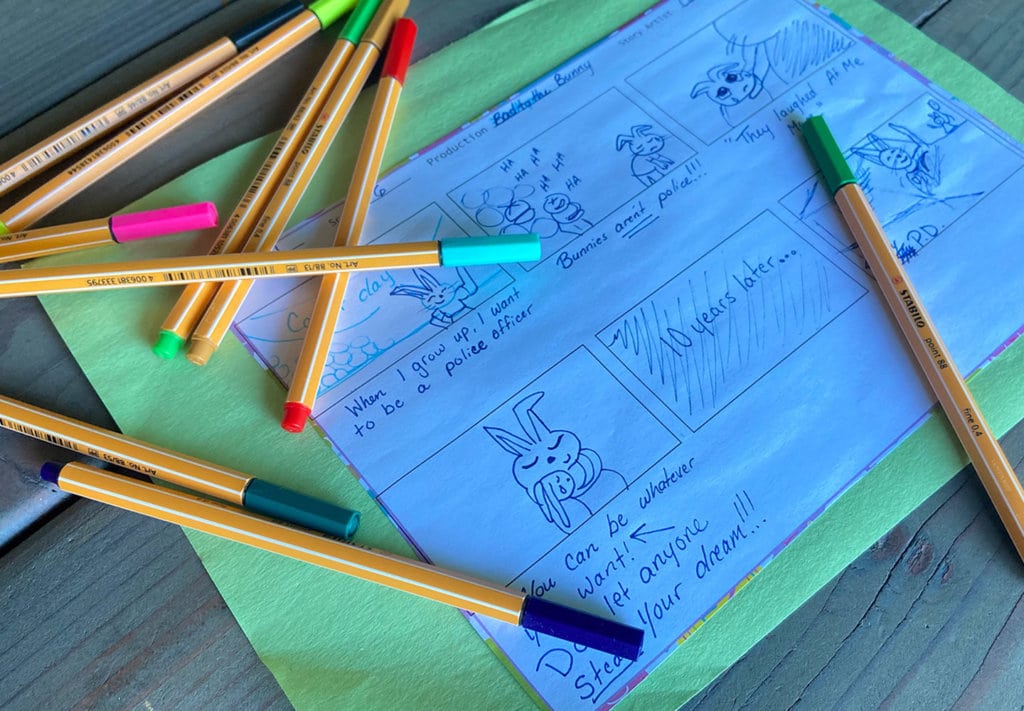
Storyboard
Storyboard
Topic: Storytelling
Empowerment Lesson Video: Storytelling 101
Supplies:
- Paper
- Pen/markers/crayons/pencils
- Ruler
Video Discussion:
Ask students to think of examples of good stories that they are familiar with.
Have students discuss at least one example story with a partner and explain why they believe it qualifies as a good story. After allowing two minutes for discussion, call on students to share their ideas.
Help students understand that good stories share many of the same qualities regardless of genre, medium, or topic. Ensure that students understand that stories can teach us about life, ourselves, and others.
Tell students they will be watching the video titled Storytelling 101. Explain that the video presents role models talking about storytelling and the qualities of good stories.
After viewing, use some or all of the following questions to review the video content and prepare for the activity:
- Think of your favorite story. What makes it your favorite story? Try to identify the qualities of a good story that it demonstrates.
- One role model said that good stories start with complex characters because people are naturally complex. In what ways are you complex? What does it mean to create a complex character?
- Think of a character from your favorite novel or movie. Is the character complex? What makes him/her into a complex character?
- Good stories often teach a lesson. What story have you read recently that taught you a lesson? What was the lesson? How did the story teach it?
- How could being a good storyteller help you in your future career? What storytelling qualities are also important in the work environment?
- How do you use storytelling in your life? At home? At school? With your friends?
Activity Instructions:
This activity introduces students to the fundamentals of storytelling by helping them visually organize a story into key moments. By creating a storyboard, students will practice sequencing events, summarizing action, and thinking like a storyteller.
Great stories unfold one step at a time. In this activity, you will create a storyboard to break down a story into six key scenes. Through drawing and writing, you’ll map out the action and bring your story to life!
Instructor Notes: For students with little prior storytelling experience, a well-known story can be assigned to all students in Step 4.
- Gather the materials you will need to create your storyboard including a writing utensil, paper, and a ruler.
- Use your ruler to draw a straight horizontal line through the center of the paper.
- Then, draw two vertical lines, evenly spaced on the paper. You should have six even rectangles.
- Brainstorm a simple story idea. Then, break down your story into six “scenes”.
- Draw images to represent each of your six scenes in the rectangles on your paper.
- Underneath each scene, write a brief description.
- Once your storyboard is complete, share it with a partner. Explain why you chose each scene and how it helps tell the story.
